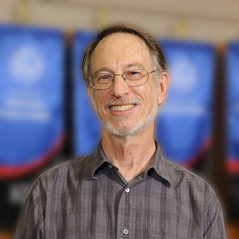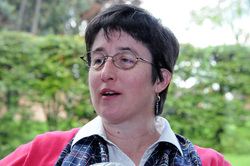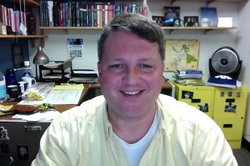
Discovering Astronomy
The comprehensive contents from this book, combined with Odigia’s teaching and learning tools have everything you need to engage, collaborate, track, and assess your students.
This course includes:

2,000+
ready-to-use, auto-graded
assessment questions

20
discovery activities

20+
PowerPoint presentations
for instructor use
Helping Teachers Do What They Do Best: Teach

Customize
Use our courses as is or easily customize them to fit your teaching style and the needs of your students. You can add your favorite resources, hide and show our existing content and pre-built assessments, or make them your own. Everything your students need, in one place!

Engage and Collaborate
Odigia combines learning materials, discussions, and tools to create a familiar social experience for students allowing you to easily connect and redirect students attention.

Track
See how much time students are spending on different areas of the course, which areas are creating the most amount of engagement and identify topics the students are struggling with. Flag and provide feedback on assignments to proactively meet individual students' needs.

Assess
Game theory allows students to monitor their progress visually and motivates them to stay on track. Students can see exactly what activities they need to complete, which ones have been flagged and compare their progress against the overall class.
Discovering Astronomy Course Outline
Chapter Synopsis: We begin where astronomy began — with people observing the sky. Astronomy is first and foremost an observational science; only after astronomers have made observations of phenomena does interpretation based on theory come into play. The first chapter is a grand tour of the universe. We begin with a brief look at the sorts of objects that inhabit it. In addition, we take a first look at the vast range of sizes and distances of the universe’s components. Section 1.1 – What is Astronomy? Section 1.2 – Our View of the Cosmos Section 1.3 – The Solar System Section 1.4 – Stars, Galaxies, and Beyond Section 1.5 – Where does astronomy GoChapter One: Beyond the Blue Horizon: A Grand Tour of the Universe
Chapter Two: Science and Pseudoscience
Chapter Synopsis: In the first part of this chapter you will learn what science is, using astronomy as an example. In the second part, we further define science by showing what is not science. Finally, we examine various characteristics of what often pretends to be science but isn’t.
Section 2.1 – An Expedition to Earth
Section 2.2 – Astronomy as an Observational Science
Section 2.3 – Science as a Process
Section 2.4 – Is It Science or Pseudoscience?
Section 2.5 – Do New Ideas Displace the Old Ones?
Chapter Three: Astronomical Observations: Angles and Uncertainties
Chapter Synopsis: Beginning with this chapter, this book contains a variety of activities called Discoveries at the end of some chapters. Working with these Discoveries, you can become actively involved in learning astronomy and have the opportunity to make simple but meaningful measurements. These Discoveries also give a deeper understanding of both the subject matter and the methods of astronomy. A guiding philosophy of this book is to make active learning experiences available wherever possible. Discoveries are self-contained in the text and allow you the opportunity to do something with available data.
Section 3.1 – Angles and Angular Measurement
Section 3.2 – Angles on the Celestial Sphere
Section 3.3 – The Relationship between Physical and Angular Size
Section 3.4 – Measurement Uncertainty
Section 3.5 – Systematic Uncertainties in Astronomy: The Kapteyn Universe as an Example
Chapter Four: Basic Observations and Interpretations of the Sky
Chapter Synopsis: In this chapter, we look first at fundamental observations in this chapter. Then, in the next chapter, we build a model that best explains the observations while also making testable predictions.
Section 4.1 – Early Observations of the Sky
Section 4.2 – Early Greek Observations: The Round Earth
Section 4.3 – The Observed Motions of the Sky
Section 4.4 – The Motion of the Sun
Section 4.5 – The Reasons for the Seasons
Section 4.6 – The Location of Stars on the Celestial Sphere
Section 4.7 – The Motion and Phases of the Moon
Section 4.8 – The Motions of the Planets
Section 4.9 – How Stars Get Their Names
Section 4.10 – Measuring Star Brightness
Chapter Five: The Historical Quest to Model the Solar System
Chapter Synopsis: In this chapter we follow the way our knowledge of the layout of the Solar System developed from the time of the Greek Earth-centered view to the Sun-center view during the renaissance in Europe. We will be interested in how the ideas that developed in one era were a natural outgrowth of the state of astronomical observations and degree of sophistication of the times.
Section 5.1 – Greek Astronomy
Section 5.2 – Astronomy during the Middle Ages
Section 5.3 – The Heliocentric Hypothesis
Section 5.4 – Kepler’s Laws of Planetary Motion
Section 5.5 – The Search for Underlying Laws
Section 5.6 – Evidence in Favor of the Heliocentric Hypothesis
Section 5.7 – Observational Evidence of the Earth’s Rotation
Chapter Six: The Structure and Formation of Planetary Systems
Chapter Synopsis: In this chapter we will look at the overall structure of the Solar System (we defer the details to Chapters 8 to 10). We will find some striking patterns that can lead us to an understanding about how the Solar System formed. We will discuss some of the hypotheses of Solar System formation and see how well each fits the observable data. Once we have done this we will compare our own solar system to known planetary systems elsewhere in the universe.
Section 6.1 – An Overview of the Solar System
Section 6.2 – Observations: Orbital Patterns
Section 6.3 – The Distribution of Angular Momentum
Section 6.4 – Hypotheses of the Origin of the Solar System
Section 6.5 – Modern Ideas
Section 6.6 – Other Planetary Systems
Chapter Seven: The Smallest Objects of the Solar System
Section 7.1 – Pluto and the Trans-Neptunian Objects
Section 7.2 – Comets
Section 7.3 – Asteroids
Section 7.4 – Meteors, Meteor Showers, and Meteorites
Section 7.5 – Interplanetary Dust
Section 7.6 – Meteorites and the Early Solar System
Chapter Eight: The Earth and Moon: Processes and Facts
Chapter Synopsis: Earth is a planet, circling the Sun in its own time like all the other planets. Our presence on it makes the Earth of special interest to us. It makes sense to begin our study of planets by learning some of the basic facts about our own home planet as well as the variety of processes that have made the Earth the way it is.
Section 8.1 – Earth as an Astronomical Body
Section 8.2 – Earth’s Interior
Section 8.3 – Earth’s Surface
Section 8.4 – Earth’s Atmosphere
Section 8.5 – Earth’s Magnetism
Section 8.6 – The Moon: Large-Scale Characteristics
Chapter Nine: The Earth-like Planets
Chapter Synopsis: In this chapter, we study the terrestrial planets from the viewpoint of comparative planetology, comparing and contrasting them with each other. We use Earth and the Moon as the standards of comparison, simply because we know more about them and the processes that determined the way they are.
Section 9.1 – Introduction to the Terrestrial Planets
Section 9.2 – Large-Scale Characteristics
Section 9.3 – Atmospheres
Section 9.4 – Surfaces
Section 9.5 – Interiors
Section 9.6 – Moons
Section 9.7 – Evolutionary Comparison
Chapter Ten: The Jovian Planets
Chapter Synopsis: In this chapter you will learn about some of the exciting results of recent explorations, and you will see that processes studied in earlier chapters are applicable to each of the Jovian planets and their moons.
Section 10.1 – Introduction
Section 10.2 – Large-Scale Characteristics
Section 10.3 – Atmospheres
Section 10.4 – Planetary Interiors
Section 10.5 – Planetary Interiors
Section 10.6 – Planetary Rings
Section 10.7 – Future Studies of the Jovian Planets and Moons
Chapter Eleven: The Nature of Light
Chapter Synopsis: What is light? To get a handle on that question we will examine three models that allow us to think about the nature of light — as a ray, a wave, or a particle. These three models allow us to describe and predict light’s behavior and to extract detailed information from light of all types.
Section 11.1 – Light as a Ray
Section 11.2 – Light as a Wave
Section 11.3 – Light as a Stream of Particles
Chapter Twelve: Telescopes - Our Eyes of Discovery
Chapter Synopsis: In this chapter, you will study how lenses and mirrors form images, and how combinations of lenses and mirrors form telescopes. In addition you will read about the auxiliary instruments that are attached to telescopes to detect the light. Finally, we discuss the places at which telescopes are located on Earth as well as NASA’s Great Observatories in space.
Section 12.1 – The Formation of Images
Section 12.2 – Telescopes
Section 12.3 – Comparing Reflecting and Refracting Telescopes
Section 12.4 – Reflecting Telescopes of Various Types
Section 12.5 – The Telescopes of the Future
Section 12.6 – Detectors and Instruments
Section 12.7 – Radio Astronomy
Section 12.8 – Optical and Radio Observatory Sites
Section 12.9 – Beyond Optical and Radio Astronomy
Section 12.10 – NASA’s Great Observatories
Chapter Thirteen: Spectra - The Key to Understanding the Universe
Chapter Synopsis: In this chapter we investigate the three principal types of spectra and learn their significance. We will also examine the principles by which the chemical compositions of and physical conditions in stars can be measured. Finally, we apply these principles to analyzing various sources of radiation both in the laboratory and in the outside world.
Section 13.1 – Observations of Spectra
Section 13.2 – Understanding Spectra
Section 13.3 – Applications of Spectroscopy
Chapter Fourteen: Understanding Stellar Spectra
Chapter Synopsis: Classifications are like boxes into which similar objects are placed. Such classifications provide opportunities to see similarities and differences among objects. Astrophysicists classify galaxies (see Chapter 21) and stars according to their physical properties and appearance. As we shall see, stars can be classified on the basis of their spectrum (this chapter), their variation in light output (Chapter 18), and their membership in clusters of stars (Chapters 15 and 18). Because so much of what we know about the universe comes from an analysis of spectra, we now turn to looking at stellar spectra in some detail.
Section 14.1 – Classification of Stellar Spectra
Section 14.2 – The Cosmic Abundance of the Chemical Elements
Section 14.3 – The Doppler Effect
Section 14.4 – What We Can Learn from Spectral Lines
Chapter Fifteen: The Observed Properties of Normal Stars
Chapter Synopsis: Astronomers use a variety of techniques to find the fundamental properties of stars. We begin by learning how they use parallax to determine directly the distance to the nearest stars. Distance, while important, is an external property that is independent of the intrinsic properties of stars.
Section 15.1 – Distance Measurements
Section 15.2 – Binary Stars and Stellar Masses
Section 15.3 – Binary Stars and Other Stellar Properties
Section 15.4 – The Hertzsprung-Russell Diagram
Section 15.5 – Main-Sequence, Giant, Supergiant, and White Dwarf Stars
Section 15.6 – Explanation of the Main Sequence
Section 15.7 – Stellar Distances and the H-R Diagram
Chapter Sixteen: Energy Source and Structure of the Sun and Stars
Chapter Synopsis: One of the most dramatic examples of the importance of basic research is the discovery of nuclear fission and nuclear fusion. Although few discoveries have had more practical implications for the survival of humanity, the basic concepts were first discovered by astronomers and physicists doing research that appeared to be utterly without any practical significance. Their question was: What is the source of power for the Sun and other stars?
Section 16.1 – The Power Produced by the Sun
Section 16.2 – Energy Sources
Section 16.3 – The Conditions Required for Fusion
Section 16.4 – Proof of Fusion in Stars
Section 16.5 – Stellar Structure
Section 16.6 – The Lifetimes of Stars
Section 16.7 – The Sun—A Typical Star
Chapter Seventeen: Star Formation and Evaluation to the Main Sequence
Chapter Synopsis: In this chapter, we first study the clouds of dust and gas, with particular attention to the molecules necessary to the process by which stars form inside these clouds. Then we will look at the currently accepted theory of star formation. Finally, we will examine a variety of observations that show that the theoretical picture we have painted is correct in its general outline. Our goal is to understand how stars form, and what physical processes affect their evolution. Thanks to technological advances in detectors and the capability to place telescopes in space, we are making great progress towards answering these difficult questions.
Section 17.1 – Matter for Star Formation
Section 17.2 – Star-Formation: Theory
Section 17.3 – Star-Formation: Observations
Section 17.4 – A Prominent Region of Star Formation: The Orion Molecular Cloud Complex and Nebula
Chapter Eighteen: Stellar Evolution after the Main Sequence
Chapter Synopsis: In this chapter, we first describe the theoretical picture of stellar evolution that results from extensive computer modeling, and then compare it to a variety of observations.
Section 18.1 – The Mid-Life Evolution of Sunlike Stars
Section 18.2 – The Mid-Life Evolution of Stars Less Massive Than the Sun
Section 18.3 – The Mid-Life Evolution of Stars More Massive Than Eight Solar Masses
Section 18.4 – Pulsating Stars
Section 18.5 – Mass Loss, Binary Stars, and Stellar Evolution
Section 18.6 – The Death of Stars Less Massive Than Eight Solar Masses
Section 18.7 – The Observational Evidence for Stellar Evolution
Chapter Nineteen: Stellar Death and Catastrophes
Chapter Synopsis: In this chapter we will complete the discussion of the life cycle of stars with more than a few solar masses and further examine the evolution of binary stars. Such stars often experience rapid and sometimes violent changes as they age, and they play an important role in our discussion. This chapter also discusses the strangest objects studied by astronomers: neutron stars and black holes.
Section 19.1 – Novae
Section 19.2 – Supernovae
Section 19.3 – Neutron Stars and Pulsars
Section 19.4 – Black Holes
Section 19.5 – Compact Objects in Binary Systems
Chapter Twenty: The Milky Way - Our Galaxy
Chapter Synopsis: Expanding on the discussion in Chapter 3, we describe attempts to determine the shape and size of our own Milky Way Galaxy along with a more complete description of its components. In an interesting parallel with Copernicus’s dethroning of the Earth, we will see how our true place in our galaxy was found. However, such aspects as structure, size, location and components do not completely describe our galaxy.
Section 20.1 – Characteristics of the Milky Way
Section 20.2 – Characteristics of the Milky Way
Section 20.3 – Interstellar Gas and Dust
Section 20.4 – The Structure of the Milky Way System
Section 20.5 – The Formation and Evolution of the Galaxy
Section 20.6 – The Galactic Magnetic Field
Section 20.7 – Cosmic Rays
Chapter Twenty-one: Galaxies
Chapter Synopsis: In addition to learning about individual types of galaxies, we will discover that galaxies are not the largest “things” in the universe. The first structure is our small (few million light-years diameter) Local Group. Hubble’s discovery of a correlation between red shift and distance of galaxies outside the Local Group is described. Still larger are the clusters of galaxies and superclusters made of clusters of galaxies. Along the way we discuss one of the central puzzles of modern astronomy, dark matter which thus far has only revealed itself by its gravitational effects.
Section 21.1 – The Historical Problem of the Nebulae
Section 21.2 – The Morphology of Galaxies
Section 21.3 – Distances of the Galaxies
Section 21.4 – General Galaxy Attributes
Section 21.5 – The Star and Gas Content of Galaxies
Section 21.6 – The Formation and Evolution of Galaxies
Section 21.7 – Clusters of Galaxies
Section 21.8 – Clusters of Clusters: Superclusters
Section 21.9 – Cluster and Supercluster Formation
Chapter Twenty-two: Active Galaxies and Quasars
Chapter Synopsis: In this chapter, we describe the observational characteristics of these “active galaxies” and related objects. We also discuss theoretical ideas concerning how the vast amounts of energy associated with many of these systems are produced. In doing so, we will see how astronomers have attempted to produce a unified model for apparently diverse phenomena.
Section 22.1 – Seeing Galaxies in a New Light
Section 22.2 – Other Active Galaxies: Seyfert Galaxies, BL Lac Objects, and Quasars
Section 22.3 – The “Monster” Energy Source for QSOs and AGNs
Section 22.4 – A Unified Model of AGN, BL Lacs and Quasars
Chapter Twenty-three: The Origin and Evolution of the Universe
Chapter Synopsis: One of the most remarkable aspects of the study of cosmology is the revolution that has occurred over the last few decades. Because of the advances that have been made, astronomers now think that we have a pretty good idea of the nature of the universe, how it is evolving, and how it will ultimately die.
Section 23.1 – The Four Pillars of the Big Bang
Section 23.2 – Questions about the Big Bang
Section 23.3 – Surprising Mysteries of the Big Bang
Section 23.4 -Multiple Universes?
Chapter Twenty-four: Discovering if there is Life Elsewhere in the Universe
Chapter Synopsis: This chapter introduces you to a new science—astrobiology. We will start, as always in this book, with what we know and then see how this guides us in gathering new information. We begin with an exploration of the one example of a world with life that we do know—the Earth—and then infer from that what life on other worlds might be like and how we could detect it. Just as Chapter 1 did, this final chapter will discuss concepts ranging across the scale of astronomical sizes, from the atomic to the galactic.
Section 24.1 – What is Life?
Section 24.2 – The Ingredients for Life
Section 24.3 – The Search for Extra- Terrestrial Life inside Our Solar System
Section 24.4 – The Search for Life Outside Our Solar System
Section 24.5 – The Search for Extraterrestrial Intelligence
About the book
DISCOVERING ASTRONOMY
6th Edition

This full book is comprehensive in its coverage of the field and the background information needed to understand astronomy. This edition is not only up-to-date, but continues and expands upon its unique pedagogical features: an emphasis on understanding the nature of science; its use of in-text inquiries; chapter discoveries. The chapter summaries help emphasize the nature of science by grouping the chapter’s ideas into observations, theory, and conclusions. Concept videos, made specifically for the book to aid understanding physical concepts, are embedded within the text.
New to this edition are Critical Observations, which illustrate specific examples throughout astronomy of how a specific observation allowed astronomers to choose one theory over the competing ideas.
About the authors:
Stephen Shawl

Stephen Shawl brings decades of teaching experience and textbook writing to the newest edition of Discovering Astronomy. His experiences of teaching undergraduate students at all levels were shaped by numerous Chautauqua short courses and other workshops for college teachers that he attended. Starting in the seventies, he integrated peer undergraduate tutors into his teaching of introductory astronomy and continued to use them throughout his career. He was a pioneer at the University of Kansas in the use of student response systems to increase student involvement in their learning. As an extension of his interest in teaching, he was the principal investigator for an astronomy workshop for junior high and middle school science teachers. His textbook writing career began in writing test banks and instructor’s manuals for many editions of an introductory astronomy textbook before he was asked in 1990 to write the third edition of the unique textbook Discovering Astronomy; he has been the first author in producing its later editions. He was a member of the Education Advisory Board of the American Astronomical Society and served as the Chairman of their Working Group on Astronomy Education. Now a professor emeritus at the University of Kansas, during retirement he has taught at the University of Arizona and Pima Community College in Tucson. Educated at the University of California at Berkeley in the early 1960s and the University of Texas at Austin, he received his Ph.D. in 1972. Immediately after receiving his doctorate, he joined the Department of Physics and Astronomy at the University of Kansas. Research interests involved the study of the fundamental properties of globular star clusters, the presence of gas and dust in these clusters, and cool variable stars whose light is sometimes polarized. Stephen Shawl
Gene Byrd

Gene Byrd has been prolific in his writing for students. Starting with one of the original authors of Discovering Astronomy he published a self-paced course used for years at the University of Texas and on-line at the University of Alabama. He is co-author of two senior/graduate level texts Cosmology: Foundations and Frontiers and Paths to Dark Energy: Theory and Observations along with a popular book, The Evolving Universe and the Origin of Life. He has been honored as a University of Alabama College of Arts and Sciences Distinguished Teaching Fellow. His research interests are the dynamics of galaxies, where he discovered “an inconvenient galaxy” NGC4622, which has inner and outer spiral arms winding in opposite directions, and the effects of dark energy in our local universe. Dr. Byrd served as Secretary and Chair of the American Astronomical Society’s Division on Dynamical Astronomy. He has helped organize several international conferences, the last one in St Petersburg, Russia published as Order and Chaos in Stellar and Dynamical Systems. He received a B.S. in physics from Texas A&M University in 1968 and a PhD in astronomy from the University of Texas at Austin. He became a faculty member at the University of Alabama at Tuscaloosa in 1974, retiring in 2009. Gene Byrd
Susana Deustua

Susana Deustua has been involved in education as faculty, project director, and administrator. She taught at Case Western Reserve University for a year before joining the Lawrence Berkeley National Laboratory as Project Director for the Hands-On Universe education project. As the Director of Education for the American Astronomy Society she was involved in astronomy education nationally before becoming the US Program co-Chair for the International Year of Astronomy 2009, and served on the IAU IYA 2009 Executive Working Group. Susana’s research interests span a broad range from dark energy and supernova cosmology, instrumentation, gas content of elliptical galaxies, precision spectrophotometric calibration, and astronomy education research. She was a staff scientist in the Physics Division as a member of the Lawrence Berkeley Lab’s Supernova Cosmology Project. Susana shared the 2007 Gruber Prize in Cosmology awarded to the Supernova Cosmology Project, the High-Z Supernova Team, Saul Perlmutter and Brian Schmidt for their discovery of Dark Energy. Team members were also recognized through the awarding of the Breakthrough Prize in Physics in 2014. She is currently on the staff at the Space Telescope Science Institute. Broadly educated, she earned her BA in Physics, astronomy and medieval history from Swarthmore College and her Ph.D. in astronomy from the University of Michigan. She held a postdoctoral fellowship at the Lawrence Livermore National Laboratory, followed by an assistant research scientist position at the Space Sciences Laboratory at the University of California-Berkeley. She is a member of the American Astronomical Society, the Astronomical Society of the Pacific, the International Astronomical Union and the American Association of Physics Teachers. Susana Deustua
Michael LoPresto

Michael LoPresto is well known the astronomy education community. He has over 20 years of experience teaching introductory astronomy at Henry Ford Community College in Dearborn, Michigan. During that time, he has produced more than 50 publications, many specifically about teaching introductory astronomy, the journals include Astronomy Education Review, The Physics Teacher, Physics Education, American Journal of Physics, Mercury, and ASP-Universe in the Classroom. He has made numerous presentations, again many on teaching introductory astronomy, at national and regional meetings, including the Astronomical Society of the Pacific (ASP)-Cosmos in the Classroom Symposiums and the American Association of Physics Teachers (AAPT). While currently serving as a member of the National Astronomy Education Committee for AAPT and recently appointed a member of the Editorial Board for their journal –The Physics Teacher, he is also a past president of the Michigan Section of the AAPT and is currently organizer of the group’s “Astronomy Arm.” In addition, he is the author of the Astronomy Media Workbook, an Astronomy laboratory manual, an astronomy textbook supplement, Cycles in the Skyand was asked to and wrote a chapter on challenges in astronomy education for the book Science Education Issues and Developments. Finally, he worked with Stephen Shawl in producing a customized edition of the 4th edition of Discovering Astronomy for the University of South Carolina. Michael LoPresto
